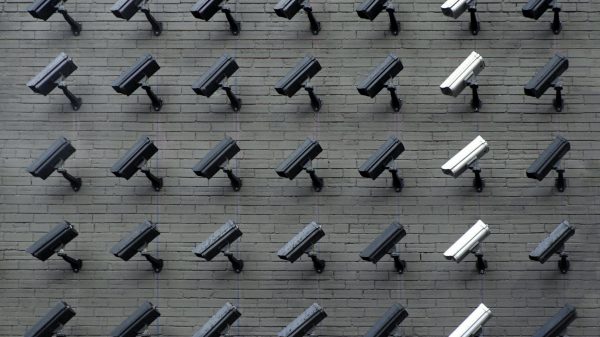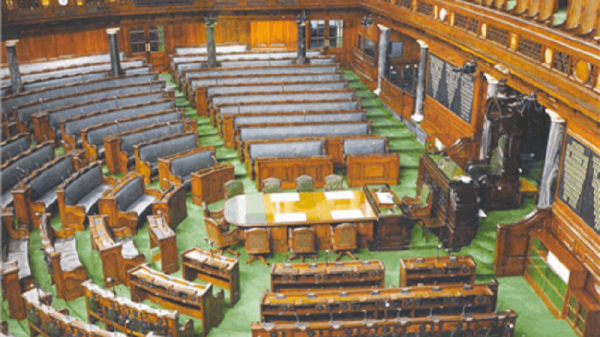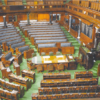Amid international criticism of India’s IPR regime, this report highlights issues and makes key recommendations related to streaming services, artificial intelligence patents, e-textbooks, and more.
The Department Related Parliamentary Standing Committee on Commerce chaired by V Vijayasai Reddy of the YSR Congress Party on July 29 published a Review of the Intellectual Property Rights Regime in India, with broad recommendations across the spectrum on India’s IPR laws and regime. From a digital point of view, the report recommended that the government should legislate to let streaming services come under statutory licensing; that restrictions be put in place for digital storage of copies of textbooks; that patenting systems be updated for Artificial Intelligence; and that IPR systems be upgraded with technology.
Why it matters? The IP regime in India has been criticised for being lagging in several aspects. A US Trade Representative report cites the high incidence of online piracy in the country, and issues with compulsory licensing, which led to a huge conflict between Warner and Spotify in 2019. The standing committee’s report is among the most significant efforts to unravel the entire spectrum of issues related to intellectual property, and its suggestions may have a significant impact on future changes to the regime.
Key takeaways
The main concern of the report is to create “an IPR ecosystem that facilitates an environment of research and innovation that is consistent with larger public interest while ensuring a fair competition in industrial, economic, social, scientific and technological spheres.” To that end, here are some of its suggestions.
Statutory licensing for streaming
Importantly, the committee recommended that Section 31D of the Copyright Act be expanded to allow statutory licensing of content even for online streaming services. This is a notable recommendation because Section 31D is not without controversy. A US State Department report on India’s investment climate said that music labels were concerned about statutory licensing online, citing difficulties in collecting royalties.
- What is statutory licensing? Statutory licensing is the idea that broadcasters can pay a fixed fee to a copyright holder to license their content without getting bogged down in negotiations. The concept was initially developed for radio, and in 2012 it was expanded to television broadcasters by way of amending the Copyright Act and inserting Section 31D.
- Statutory licensing online: Statutory licensing was not applied for the internet by Parliament. An Office Memorandum from the government was what expanded the definition of “broadcast” to include internet broadcasting. However, when Airtel’s Wynk tried to use this provision to license music from Tips Music without negotiations, the latter obtained an order from the Bombay High Court that limited this interpretation.
The committee explicitly recommended that this licensing provision be made available to streaming services, which could let them license content without entering into negotiations. If this recommendation is accepted, it would undo the impact of the Bombay High Court order.
The Committee recommends the Department to amend Section 31D for incorporating ‘internet or digital broadcasters’ under statutory license in wake of the rise in digital or OTT platforms with manifold increase in music as well as movie apps and its significant contribution to economy. This would ensure a level playing field by making content accessible on similar terms to both traditional and internet broadcasters alike. — Standing Committee Report
Restrict digital storage of textbooks
Based on testimony from scholarly publishers like Ankit Sahni, Ajay Sahni & Associates, the committee recommended tighter restrictions on making copies of educational content. “The Committee recommends the Department to facilitate a fair and equitable ecosystem of literary culture in the country by bringing in necessary changes in Section 51(1) of the Act such as permitting reprographic works in Government-owned educational institutions and storing it in libraries for their easy access to students as well as stipulating limitations to unrestricted commercial grants to copy books and literary works and storage of copied works in digital formats,” the committee recommended. (emphasis supplied)
AI and the IP Regime
The report explores the applicability of the IP regime to Artificial Intelligence, particularly the patentability of AIs that are not made by humans.
“[T]he condition to have a human inventor for innovating computer related inventions (innovations by AI and machine learning) hinders the patenting of AI induced innovations in India. Therefore, there is a need to review the provisions of both the legislations [the Copyright Act, 1957 and the Indian Patents Act, 1970) on a priority basis,” the committee observed.
- Crisis management and revenue: Noting the importance of AI in responding to crisis management issues and its potential to generate revenue, the committee recommended that “a separate category of rights for AI and AI related inventions and solutions should be created for their protection as IPRs,” in addition to amending the aforementioned laws.
- Mathematical methods: Patents in India for AI are supposed to be registered in mathematical terms, the committee observed. “The Committee recommends the Department that the approach in linking the mathematical methods or algorithms to a tangible technical device or a practical application should be adopted in India for facilitating their patents as being done in EU and US,” the report said.
IPR protection in high tech industries
Citing the USAID report on India’s investment climate, the committee observed that:
For all sectors and all types of investment a significant number of firms reported that intellectual property protection was a factor in their decisions about where to invest. Importance of IPR protection was greater for high-technology industries and for investments with the greatest potential to transfer technology.
The committee recommended that the government measure the impact of IPR on the economy.
Upgrade patent website
“During the interactions with the Committee, certain law firms flagged the issue of lack of simplicity and lucidness of the information available on the website of Indian Patent Office making the process of filing patents and online search of information cumbersome and taxing,” the report observed. (For context, this is what the trademark search site looks like at the time of publication.)
The Committee recommends the Department to take steps for modernization, upgradation and maintenance of the website of Indian Patent Office to make it user friendly enabling the patentees to easily navigate through the site for accessing requisite information on IPRs and for filing patents. — Standing Committee Report
Registry should use tech
The upgradation suggested didn’t stop at the website alone. Even the trademark registry had to step up its systems to the times, the committee recommended, not just for speed but also for security:
Communication to and from Registrar or designated Officer at the Trademarks Registry ought to be expedited using technology and encryption tools to ensure their speedy redressal. The Committee recommends the Department to take steps in modernization of trademark offices and workplaces by undertaking digitalization of work processes and facilitating e-services for speedy redressal of work. — Standing Committee Report (emphasis supplied)
Also read
- IPRS CEO Rakesh Nigam: Livestream Tariff To Be Rationalised, Free Performances Won’t Be Charged
- #NAMA: What Changes The Music Industry And Artists Would Like To See In The Copyright Act
- Ghost Post: The Myriad Ways In Which The Copyright Amendment Act, 2012 Is Being Circumvented – Spicy IP
Have something to add? Subscribe to MediaNama and post your comment
























You must be logged in to post a comment Login